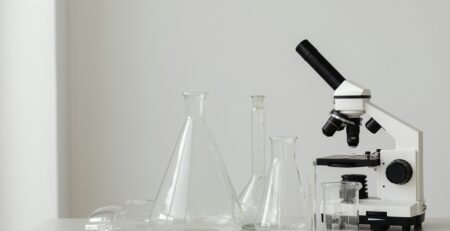4
Sep
Borosilicate Glass vs Polypropylene: Which is Best for Australian Labs?
Laboratories rely on durable, accurate, and safe materials for experiments, storage, and teaching. Two of the most widely used are BORO 3.3 borosilicate glass and polypropylene (PP). Each has distinct advantages and limitations. For Australian schools, universities, and industry labs, choosing the right material depends on the balance between accuracy, chemical resistance, safety, and sustainability.
Borosilicate Glass: The Gold Standard for Precision
Borosilicate glass is manufactured to ISO 3585 standards and is widely considered the material of choice in professional labs.
- Thermal resistance: Withstands rapid heating, cooling, and autoclaving.
- Chemical durability: Resistant to acids, alkalis, and solvents.
- Accuracy: Provides precise graduations, essential for analytical chemistry.
- Longevity: Reusable for years, supporting sustainable lab practices.
BORO 3.3 is preferred in analytical, pharmaceutical, and research labs where accuracy and traceability are essential.
Polypropylene: Lightweight and Cost-Effective
Polypropylene plasticware is commonly used in educational and industrial environments where glass may not be practical.
- Lightweight and shatterproof, reducing the risk of accidents.
- Resistant to many chemicals, but less stable with strong solvents.
- Affordable, making it suitable for high-volume or disposable applications.
- Limited heat resistance, prone to warping at high autoclave temperatures.
PP is a good choice for classrooms, fieldwork, and routine tasks where precision is less critical.
Comparison Table: Borosilicate Glass vs Polypropylene
| Feature | BORO 3.3 Borosilicate Glass | Polypropylene (PP) |
|---|---|---|
| Thermal Resistance | Excellent, autoclave safe | Limited, may warp with heat |
| Chemical Resistance | Very high, resists acids, alkalis, solvents | Good, but not suitable for strong solvents |
| Accuracy | High, precise graduations | Moderate, graduations less reliable |
| Durability | Long lifespan, reusable | Shatterproof but shorter service life |
| Sustainability | Reusable, eco-friendly | Often disposable, contributes to plastic waste |
| Best Applications | Analytical chemistry, pharmaceuticals, QC | Education, fieldwork, general handling |
FAQs
Q1: Can polypropylene replace borosilicate glass in all labs?
No. While PP is convenient, it lacks the precision and heat resistance required in analytical and regulated laboratories.
Q2: Which is safer in schools?
Polypropylene is safer for handling by students due to its shatterproof nature, while glass is better suited for senior labs where precision matters.
Q3: Can polypropylene be autoclaved?
Yes, some PP can withstand autoclaving, but repeated cycles often degrade the plastic faster than BORO 3.3 glass.
Q4: Why is BORO 3.3 more expensive?
Its higher manufacturing standards (ISO 3585) and durability justify the cost, as it lasts much longer than plastic alternatives.
References
- ISO 3585: Borosilicate Glass 3.3 — Properties and Standards.
- ASTM E438: Standard Specification for Glasses in Laboratory Use.
- Green Labs Australia — Sustainability in Scientific Research.
- University of Sydney Chemistry Safety Manual.
- NIST Chemistry WebBook, National Institute of Standards and Technology.

